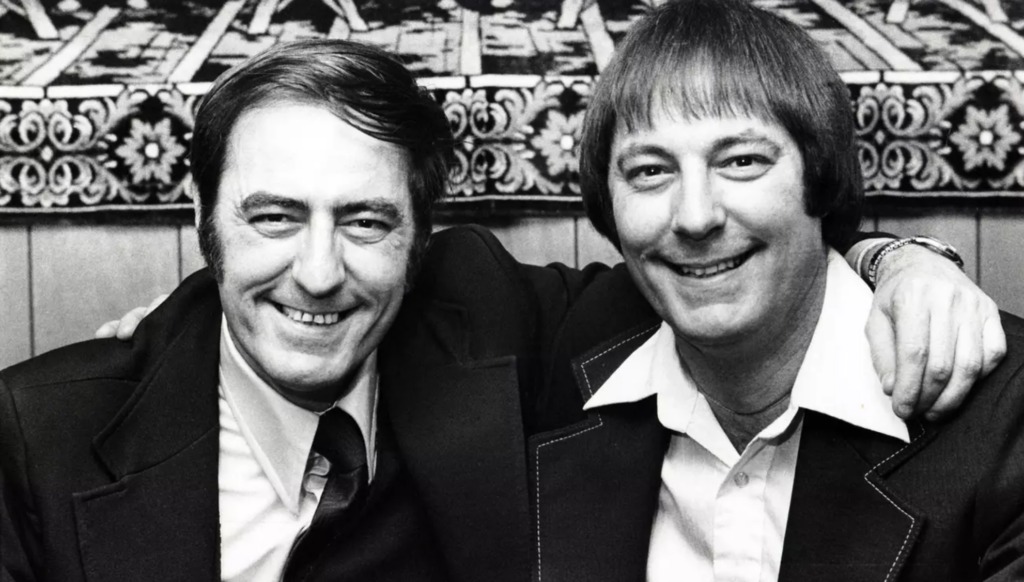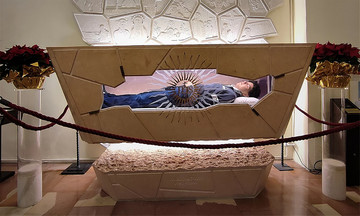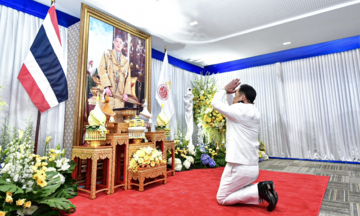Born in 1940 in Ohio, Jim Edward Lewis and Jim Arthur Springer were the sons of a 35-year-old immigrant woman. The twins were separated at 4 weeks old.
Ernest Springer, a power company employee, and his wife, Sarah, adopted one of the babies. The Springers were willing to adopt both, but were told the other twin had died. Two weeks later, Jess Lewis, a school employee in Lima, and his wife, Lucille, adopted the second baby.
Lewis grew up in Lima, Ohio, while Springer grew up in Piqua, Ohio, 65 km away. From the age of 6, Lewis knew he had a twin brother who had been adopted by another family. Springer only learned of his twin brother in his teens, but believed he had died at birth.
Lewis's adoptive mother encouraged him to search for his brother, and in January 1979, he began his quest. With the help of an adoption agency, he located Springer. On 9/2/1979, after 39 years of separation, the brothers met for the first time, shaking hands stiffly before embracing and laughing.
"I looked into his eyes and saw a reflection of myself," Springer recalled. "I wanted to yell or cry, but all I could do was laugh."
 |
Jim Lewis (left) with his arm around his twin, Jim Springer, during their reunion in 1979. Photo: BBC |
Jim Lewis (left) with his arm around his twin, Jim Springer, during their reunion in 1979. Photo: BBC
They were astonished to discover remarkable similarities in their lives. Both had married twice, their first wives were both named Linda, and their second wives were both named Betty. Their firstborn sons had similar names: James Alan and James Allan.
In their childhoods, both had owned dogs named Toy. They both had adoptive brothers named Larry. Both had trained in law enforcement and worked part-time in local police forces. They shared hobbies like drafting and carpentry. Their favorite subject was math, and their least favorite was spelling.
They often vacationed at the same beach near St. Petersburg, Florida, and both drove Chevrolets. Their smoking and drinking habits were nearly identical.
"It's really unbelievable," Springer said in a 1979 interview. "Unbelievable. Strange. A little spooky, too."
"We even say the same slang words," Lewis added. "There were times I would start a sentence, and he'd finish it!"
Thomas J. Bouchard Jr., director of the Minnesota Study of Twins Reared Apart, studied Springer, Lewis, and other separated twin pairs. He was also surprised by the findings.
"The odds of two people having the same name aren't that rare. But when you start adding up the coincidences, they start to become hard to believe. I was shocked by the similarities between the two," he said.
For researchers, identical twins like Springer and Lewis are a "living laboratory" to study the influence of genetics and environment on health and behavior.
Their study revealed a significant medical finding about mixed headache syndrome, a type of nervous tension that can lead to migraines. Previously thought to have no genetic basis, scientists revised their view, suggesting genetics might be a factor in muscle contraction headaches.
"Springer and Lewis's headaches were similar," said Dr. Leonard Heston, a member of the Minnesota research team. "The syndrome started at age 18 for both; each suffered with the same intensity and frequency. They used nearly identical words to describe it."
"The way the body reacts to stress may be more biological than experts once thought," said Dr. Joel R. Saper, director of the Michigan Headache and Neurological Institute in Ann Arbor, after learning about the twins' headaches. "We can study biological programming in this case. This means people may be born with a genetic code that predisposes them to react in a certain way to external or environmental factors. These twins have opened up a fascinating avenue of research."
Learning more about Springer and Lewis's lives, researchers developed new theories about physical development and aging. Both men were 1.83 m tall and had both unexpectedly gained about 4.5 kg for no apparent reason. Both Springer and Lewis had hemorrhoids, high blood pressure, high heart rates, and the same sleeping posture.
"Both liked to bite their nails, down to the nubs," Heston said. While inconclusive, this made scientists wonder if "people are programmed for major life changes."
Bouchard Jr.'s team conducted research for 20 years, from 1979 to 1999, on 137 twin pairs, including 81 identical and 56 fraternal twin pairs. They concluded that genetics play a crucial role in shaping individuals, from career choices to habits and health, while being raised together has a limited impact on development.
Hong Hanh (Theo NYT/Live Science)












